The Science of Phobias and Evidence-Based Natural Approaches to Treatment
Phobias represent one of the most common anxiety disorders worldwide, affecting approximately 10% of the population at some point in their lives. Unlike ordinary fears, phobias involve excessive, persistent fear of specific objects, situations, or activities that pose little or no actual danger. The resulting distress and avoidance behaviors can significantly impact daily functioning and quality of life, from limiting career opportunities to restricting social engagements and personal freedom.
While conventional treatments such as cognitive-behavioral therapy and medication have established effectiveness, many individuals seek complementary approaches, either as alternatives or adjuncts to standard care. This growing interest has spurred research into natural interventions, including nutritional supplements, herbal remedies, and mind-body practices for phobia management.
This article examines the scientific understanding of phobias and explores evidence-based natural approaches that may help alleviate phobic symptoms and support overall mental well-being. By integrating current research with traditional knowledge, we aim to provide a comprehensive resource for those seeking balanced information about complementary options for phobia treatment.
Understanding Phobias: Beyond Simple Fear
Phobias extend beyond rational fear responses, involving disproportionate reactions to stimuli that most people find only mildly concerning or not threatening at all. The Diagnostic and Statistical Manual of Mental Disorders (DSM-5) classifies phobias into three main categories:
- Specific Phobias: Intense fears of particular objects or situations, such as animals (zoophobia), heights (acrophobia), flying (aviophobia), enclosed spaces (claustrophobia), or blood/injections (hemophobia)
- Social Phobia (Social Anxiety Disorder): Fear of social situations where embarrassment or negative judgment might occur
- Agoraphobia: Fear of situations where escape might be difficult or help unavailable, often involving crowds, public transportation, or open spaces
The neurobiological underpinnings of phobias involve hyperactivity in the amygdala (the brain’s fear center) coupled with inadequate regulatory control from prefrontal cortical regions. This dysregulation results in exaggerated fear responses and impaired extinction of conditioned fear. Neurotransmitter systems, particularly those involving gamma-aminobutyric acid (GABA), serotonin, and norepinephrine, play significant roles in this process.
Genetic factors contribute substantially to phobia development, with heritability estimates ranging from 25-65% depending on the specific phobia type. Environmental influences, particularly early negative or traumatic experiences with the feared stimulus, also play crucial roles. Understanding these biological and psychological mechanisms provides the foundation for exploring how various natural approaches might address phobic symptoms.
Nutritional Supplements with Evidence for Phobia Management
Omega-3 Fatty Acids
Omega-3 fatty acids, particularly eicosapentaenoic acid (EPA) and docosahexaenoic acid (DHA), serve as essential components of neural cell membranes and influence neurotransmitter function, neuroplasticity, and inflammatory processes in the brain. These polyunsaturated fatty acids may help modulate the excessive fear responses characteristic of phobias.
A systematic review and meta-analysis published in JAMA Network Open examined 19 clinical trials and found that omega-3 supplementation significantly reduced anxiety symptoms. While the research focused primarily on generalized anxiety rather than specific phobias, the neurobiological mechanisms suggest potential benefits across anxiety spectrum disorders.
The anti-inflammatory properties of omega-3s may be particularly relevant, as emerging evidence points to connections between neuroinflammation and anxiety disorders. Additionally, these fatty acids appear to enhance serotonergic transmission and improve neuroplasticity, potentially supporting the learning processes involved in overcoming phobic responses.
Magnesium
Magnesium functions as a cofactor in over 300 enzymatic reactions in the body and plays crucial roles in neurotransmitter regulation, stress response modulation, and neural excitability. Deficiency in this essential mineral has been linked to increased anxiety and stress sensitivity, potentially exacerbating phobic responses.
Research published in the journal Nutrients found that magnesium supplementation appeared effective for mild anxiety and anxiety-related conditions. The proposed mechanisms include:
- Modulation of GABA receptors, enhancing inhibitory control in the central nervous system
- Regulation of the hypothalamic-pituitary-adrenal (HPA) axis, which governs stress responses
- Antagonism of N-methyl-D-aspartate (NMDA) receptors, potentially reducing neural excitability
- Anti-inflammatory effects that may protect against stress-induced neuroinflammation
Given the prevalence of suboptimal magnesium intake in many populations and its excellent safety profile, supplementation represents a reasonable supporting approach for individuals with phobic symptoms, particularly those with limited dietary magnesium consumption.
B-Complex Vitamins
B vitamins serve as essential cofactors in numerous biochemical pathways related to neurotransmitter synthesis, energy metabolism, and stress response regulation—all functions relevant to phobia management. Several B vitamins demonstrate particular relevance:
- Vitamin B1 (Thiamine): Supports energy metabolism in brain cells and helps produce acetylcholine, a neurotransmitter involved in memory and learning
- Vitamin B6 (Pyridoxine): Functions as a cofactor in the production of GABA, the primary inhibitory neurotransmitter that helps regulate anxiety
- Vitamin B12 (Cobalamin): Essential for myelin formation and neuronal health, with deficiencies linked to increased anxiety and depression
- Folate (B9): Works synergistically with B12 in methylation processes crucial for neurotransmitter synthesis
A study in Human Psychopharmacology found that supplementation with a B-vitamin complex significantly reduced workplace stress and anxiety compared to placebo. While research specifically addressing phobias remains limited, the fundamental roles of B vitamins in neurological function suggest potential benefits, particularly for individuals with suboptimal vitamin status.
Vitamin D
Research has identified associations between vitamin D deficiency and various anxiety disorders. This fat-soluble vitamin functions more like a hormone in the body, with vitamin D receptors present throughout the brain, particularly in regions involved in emotion and fear processing.
A 2017 study published in the Journal of Affective Disorders found significant inverse correlations between vitamin D levels and anxiety symptoms, with deficient individuals showing higher anxiety scores. The mechanisms may involve vitamin D’s roles in:
- Modulating serotonin synthesis and function
- Regulating calcium channels involved in neurotransmission
- Reducing neuroinflammation
- Supporting neurosteroid production that influences GABAergic activity
For individuals with phobias, particularly those with limited sun exposure or risk factors for vitamin D deficiency, assessment and appropriate supplementation may represent a supportive strategy for comprehensive symptom management.
Herbal Approaches with Evidence for Phobia Symptoms
Kava (Piper methysticum)
Kava has centuries of traditional use in Pacific Island cultures for its calming and anxiolytic effects. The active compounds, kavalactones, appear to work through multiple mechanisms, including:
- Modulation of GABA-A receptors, enhancing inhibitory neurotransmission
- Mild inhibition of monoamine oxidase B, potentially increasing dopamine levels
- Reduction of excitatory glutamate signaling
- Inhibition of voltage-gated sodium and calcium channels
A systematic review and meta-analysis published in the Journal of Clinical Psychopharmacology evaluated seven randomized controlled trials and concluded that kava extract was superior to placebo in reducing anxiety symptoms. While studies focusing specifically on phobias are limited, the documented anxiolytic effects suggest potential benefits for phobic anxiety.
However, safety concerns regarding potential hepatotoxicity have led to restrictions in some countries. Current evidence suggests that liver-related adverse events are rare and may be associated with poor-quality products, concurrent alcohol use, or specific genetic factors. When considering kava, standardized extracts from reputable sources should be used, and individuals with liver conditions should generally avoid this herb.
Passionflower (Passiflora incarnata)
Passionflower has demonstrated anxiolytic effects comparable to benzodiazepines in some studies but with fewer side effects and lower addiction potential. The herb contains flavonoids and alkaloids that appear to modulate GABA receptors and potentially inhibit monoamine oxidase, influencing neurotransmitter levels.
A randomized controlled trial published in the Journal of Clinical Pharmacy and Therapeutics compared passionflower extract to oxazepam (a benzodiazepine) for generalized anxiety disorder. While both treatments showed similar efficacy, passionflower produced fewer side effects and less impairment of job performance.
For individuals with phobias, particularly those with accompanying generalized anxiety, passionflower may offer a gentler alternative or adjunct to pharmaceutical anxiolytics. Its favorable safety profile makes it suitable for consideration as part of a comprehensive approach to managing phobic symptoms.
Lemon Balm (Melissa officinalis)
Lemon balm contains bioactive compounds that appear to inhibit GABA transaminase, the enzyme responsible for breaking down GABA, potentially increasing inhibitory neurotransmission. Additional mechanisms include modulation of cholinergic activity and mild antioxidant effects.
Research published in Phytomedicine demonstrated that a standardized lemon balm extract reduced laboratory-induced stress and improved self-rated calmness in healthy volunteers. A subsequent study in the Journal of Functional Foods found that lemon balm supplementation significantly reduced anxiety and associated symptoms in patients with mild-to-moderate anxiety disorders and sleep disturbances.
For individuals with phobias, particularly those with accompanying sleep issues, lemon balm represents one of the gentler herbal approaches to reducing anxiety. Its excellent safety profile makes it appropriate for most individuals, though those taking sedative medications should use caution due to potential additive effects.
Lavender (Lavandula angustifolia)
Lavender essential oil and its extracts have demonstrated anxiolytic effects through multiple mechanisms, including modulation of voltage-dependent calcium channels and inhibition of glutamate binding. Silexan, a standardized lavender oil preparation, has been extensively studied for anxiety disorders.
A meta-analysis published in Mental Health Clinician evaluated five randomized controlled trials and found that Silexan significantly reduced anxiety symptoms compared to placebo, with efficacy comparable to the anxiolytic medications lorazepam and paroxetine but with fewer side effects. While specific studies on phobias are limited, the general anxiolytic properties suggest potential benefits.
Lavender can be used as an oral supplement (typically standardized extracts like Silexan), in aromatherapy, or topically. The latter two approaches may be particularly helpful during exposure therapy for specific phobias, potentially helping modulate the physiological arousal that accompanies phobic encounters.
Mind-Body Approaches for Phobia Management
Systematic Desensitization and Relaxation Training
Systematic desensitization represents one of the most established approaches for phobia treatment, involving gradual exposure to feared stimuli while maintaining a relaxed state. This technique directly addresses the conditioned fear response at the core of phobic reactions. Various relaxation methods can support this process, including:
- Progressive muscle relaxation (PMR), which involves systematically tensing and relaxing different muscle groups
- Autogenic training, using self-suggestions to induce specific physical sensations (e.g., warmth, heaviness)
- Relaxation breathing, emphasizing diaphragmatic breathing with extended exhalation
Research consistently demonstrates that these relaxation techniques effectively reduce autonomic arousal associated with phobic responses. A meta-analysis published in the Journal of Consulting and Clinical Psychology found large effect sizes for systematic desensitization in treating specific phobias, with relaxation training enhancing outcomes.
These approaches can be learned through guided recordings, apps, or professional instruction, then practiced independently as part of a comprehensive self-management strategy for phobic symptoms.
Mindfulness Meditation
Mindfulness practices involve cultivating non-judgmental awareness of present-moment experiences, including the physical sensations, thoughts, and emotions that characterize phobic responses. This approach helps individuals develop a different relationship with fear-related experiences rather than engaging in avoidance behaviors.
A meta-analysis published in Clinical Psychology Review examined mindfulness-based interventions for anxiety disorders and found moderate to large effects for reducing anxiety symptoms. For phobias specifically, mindfulness may help by:
- Facilitating exposure by promoting willingness to experience uncomfortable sensations
- Reducing catastrophic misinterpretations of physical sensations
- Enhancing emotional regulation through increased prefrontal control
- Decreasing avoidance behaviors through acceptance-based approaches
Mindfulness-based interventions can be accessed through structured programs like Mindfulness-Based Stress Reduction (MBSR), digital applications, or self-guided practices based on established protocols.
Yoga and Movement Practices
Yoga combines physical postures, breathing exercises, and meditative elements, potentially addressing both the psychological and physiological aspects of phobic responses. Research in the Journal of Psychiatric Practice reviewed evidence for yoga in anxiety disorders and found significant reductions in anxiety symptoms across multiple studies.
The mechanisms through which yoga may benefit individuals with phobias include:
- Reducing autonomic arousal and promoting parasympathetic activity
- Improving interoceptive awareness and tolerance of bodily sensations
- Enhancing emotional regulation through mindful attention
- Increasing GABA levels in the brain, as demonstrated in neuroimaging studies
Other movement practices, including tai chi and qigong, may offer similar benefits through their emphasis on mindful movement, regulated breathing, and meditative awareness. These approaches may be particularly valuable for individuals who find traditional meditation challenging or who experience significant somatic manifestations of anxiety.
Biofeedback and Neurofeedback
Biofeedback involves using electronic instruments to measure and provide real-time feedback on physiological processes, helping individuals develop conscious control over typically automatic functions. For phobias, relevant parameters include heart rate variability, skin conductance, muscle tension, and respiration patterns.
Research in Applied Psychophysiology and Biofeedback demonstrated that heart rate variability biofeedback significantly reduced anxiety and improved emotional regulation in individuals with various anxiety disorders. By learning to modify these physiological parameters, particularly during gradual exposure to phobic stimuli, individuals can develop greater control over their fear responses.
Neurofeedback, a specialized form of biofeedback focusing on brain wave patterns, shows promise for anxiety disorders. A study in the Journal of Neurotherapy found that neurofeedback training targeting specific electroencephalographic (EEG) patterns reduced anxiety symptoms and improved emotional regulation in individuals with anxiety disorders.
While these approaches typically require specialized equipment and professional guidance initially, portable consumer devices increasingly make self-administered biofeedback more accessible for ongoing practice.
Nutritional and Lifestyle Factors Affecting Phobia Symptoms
Anti-Inflammatory Diet Patterns
Emerging research links neuroinflammation to various psychiatric conditions, including anxiety disorders. Dietary patterns that reduce inflammation may help modulate the neurobiological processes underlying phobic responses. The Mediterranean diet, characterized by high consumption of fruits, vegetables, whole grains, olive oil, and fish, has demonstrated associations with reduced anxiety symptoms in multiple observational and interventional studies.
A prospective study published in Molecular Psychiatry found that higher adherence to Mediterranean dietary patterns was associated with a significantly lower risk of developing anxiety disorders. The mechanisms likely involve multiple pathways:
- Increased intake of omega-3 fatty acids and polyphenols with anti-inflammatory properties
- Optimization of gut microbiota composition, influencing the gut-brain axis
- Reduced oxidative stress and enhanced antioxidant defense systems
- Improved micronutrient status supporting optimal neurotransmitter function
For individuals with phobias, adopting anti-inflammatory dietary patterns represents a foundational approach that may enhance resilience to stress and optimize response to other therapeutic interventions.
Blood Sugar Stabilization
Fluctuations in blood glucose can trigger or exacerbate anxiety symptoms through multiple mechanisms, including activation of the sympathetic nervous system, release of stress hormones like cortisol and adrenaline, and alterations in neurotransmitter function. For individuals with phobias, these physiological changes may lower the threshold for triggering fear responses.
Research in the Journal of Psychiatric Research found that reactive hypoglycemia was more prevalent in individuals with anxiety disorders compared to healthy controls. Strategies for blood sugar stabilization include:
- Consuming balanced meals containing protein, healthy fats, and complex carbohydrates
- Avoiding long gaps between meals and significant carbohydrate loads
- Limiting caffeine and alcohol, which can disrupt glucose metabolism
- Regular physical activity to improve insulin sensitivity
These approaches may be particularly relevant for individuals who notice increased phobic symptoms during periods of fasting or after consuming high-sugar foods or beverages.
Caffeine and Stimulant Management
Caffeine sensitivity varies considerably among individuals, but those with anxiety disorders, including phobias, often show heightened reactivity to this stimulant. Caffeine affects multiple neurotransmitter systems, including antagonism of adenosine receptors and indirect effects on catecholamines, potentially exacerbating the sympathetic arousal that characterizes phobic responses.
A study in the Journal of Psychopharmacology found that caffeine administration increased anxiety in patients with panic disorder and social anxiety disorder more significantly than in healthy controls. The researchers identified “anxiogenic vulnerability” to caffeine as a potential marker for anxiety disorders.
A caffeine reduction or elimination trial represents a low-risk intervention with potential benefits for phobic symptoms. Many individuals report noticeable improvements within days to weeks of reducing caffeine intake, though temporary withdrawal symptoms may occur during this transition period.
Sleep Optimization
Sleep disturbances and anxiety disorders show bidirectional relationships, with each potentially exacerbating the other. Insufficient or poor-quality sleep can lower the threshold for fear responses, impair cognitive control mechanisms, and increase emotional reactivity—all factors relevant to phobic symptoms.
Research in the Journal of Sleep Research found that sleep deprivation significantly increased anticipatory anxiety and amygdala reactivity to threatening stimuli. Conversely, improving sleep quality was associated with reduced anxiety sensitivity and improved outcomes in anxiety treatment.
Basic sleep hygiene principles—maintaining consistent sleep-wake times, creating a comfortable sleep environment, limiting evening screen exposure, and establishing relaxing pre-sleep routines—represent foundational strategies for optimizing sleep quality. For individuals with more significant sleep disruption, supplements like melatonin or herbs like valerian root may offer additional benefits when used with appropriate guidance.
Combining Approaches: Creating an Integrated Strategy
While individual natural interventions may offer benefits for phobic symptoms, the most effective approach typically involves combining multiple strategies tailored to each person’s specific phobia type, symptom patterns, and preferences. This integrated approach recognizes the multifaceted nature of phobias and addresses various contributing factors simultaneously.
Foundation and Building Blocks
An effective natural approach to phobia management might include these key components:
- Nutritional Foundation: Anti-inflammatory diet rich in whole foods, adequate protein, and omega-3 sources, with appropriate supplementation addressing specific deficiencies
- Physiological Regulation: Regular physical activity, sleep optimization, and management of stimulants and blood sugar fluctuations
- Mind-Body Practices: Regular implementation of techniques like mindfulness meditation, relaxation training, or yoga to develop skills in emotional regulation and distress tolerance
- Gradual Exposure: Systematic, controlled encounters with phobic stimuli while using relaxation or mindfulness skills, allowing for gradual desensitization
- Targeted Supplements: Strategic use of evidence-based supplements or herbs based on individual symptoms, with appropriate professional guidance
This foundation provides multiple paths for interrupting the self-perpetuating cycle of phobic responses, addressing both immediate symptoms and underlying vulnerability factors.
Phobia-Specific Considerations
The optimal approach may vary depending on the specific phobia type:
For Specific Phobias
Systematic desensitization typically forms the cornerstone of treatment, with mind-body practices providing essential skills for managing physiological arousal during exposure. Supplements that address acute anxiety, like GABA-modulating herbs or L-theanine, may help reduce the intensity of fear responses during exposure exercises.
For Social Phobia
The neurobiological underpinnings often involve more persistent anxiety rather than discrete fear episodes. Approaches that address ongoing nervous system regulation, such as anti-inflammatory diets, omega-3 supplementation, and regular mindfulness practice, may provide greater benefits. Herbs with adaptogenic properties, like ashwagandha, may help modulate stress responses in social situations.
For Agoraphobia
The complex interplay between panic attacks and avoidance behaviors often requires a multi-faceted approach. Stabilizing physiological factors through blood sugar management, caffeine reduction, and sleep optimization provides a foundation, while supplements that address both acute and chronic anxiety symptoms may be beneficial. Mind-body practices that enhance a sense of safety and control prove particularly valuable.
Integration with Conventional Treatments
Natural approaches often work best when thoughtfully integrated with evidence-based conventional treatments like cognitive-behavioral therapy (CBT) and, when appropriate, medication. Potential synergies include:
- Nutritional supplements like omega-3s or magnesium may optimize neural function, potentially enhancing response to CBT techniques that rely on learning and extinction processes
- Mind-body practices can complement exposure therapy by providing skills for managing physiological arousal during exposures
- Lifestyle modifications like improved sleep and regular physical activity may reduce baseline anxiety, making therapeutic exposures more tolerable and effective
- Some supplements may help mitigate side effects of medications, potentially improving adherence and outcomes
Open communication with healthcare providers about all interventions being used is essential to ensure safety and optimize integrated care.
Safety Considerations and Potential Interactions
While many natural approaches offer favorable safety profiles compared to some conventional medications, they still require careful consideration, particularly regarding quality, dosing, potential interactions, and individual factors that may influence safety.
Supplement Quality and Standardization
The quality of nutritional and herbal supplements varies considerably, with potential concerns including:
- Inconsistent active ingredient levels
- Contamination with heavy metals or other toxins
- Adulteration with undeclared pharmaceuticals
- Misidentification or substitution of herbal materials
Choosing products from reputable manufacturers that follow Good Manufacturing Practices (GMP) and ideally have third-party testing can mitigate these risks. For herbal products, standardized extracts with specified levels of active compounds typically provide more consistent effects compared to unstandardized preparations.
Medication Interactions
Several supplements with benefits for phobic symptoms may interact with commonly prescribed medications:
- St. John’s Wort can reduce the effectiveness of many medications through induction of hepatic enzymes
- Kava may potentiate the effects of sedatives and anxiolytics
- Some adaptogens may affect blood pressure and interact with antihypertensive medications
- High-dose omega-3 supplements may increase bleeding risk when combined with anticoagulants
Full disclosure of all supplements being used to healthcare providers is essential for identifying potential interactions and ensuring safe integration with conventional treatments.
Special Populations
Certain groups require additional caution when considering natural interventions:
- Pregnant and breastfeeding women should avoid many herbal remedies due to limited safety data
- Individuals with liver or kidney disease may have altered metabolism of certain supplements
- Those with bipolar disorder should use caution with stimulating herbs that could potentially trigger manic episodes
- Children and adolescents may respond differently to supplements compared to adults
Personalized medical advice is particularly important for these populations to ensure safe and appropriate implementation of natural approaches.
Future Directions in Research and Clinical Application
The field of complementary and integrative approaches to phobia treatment continues to evolve, with several promising areas for future development:
Personalized Medicine Approaches
Emerging research in nutritional genomics and pharmacogenomics suggests that individual genetic variations may influence response to both nutritional interventions and conventional medications. For example, polymorphisms in genes related to methylation pathways, neurotransmitter receptors, and inflammatory processes may affect how individuals respond to supplements like B vitamins, omega-3s, and herbal anxiolytics.
As testing becomes more accessible and interpretive algorithms improve, tailoring interventions based on genetic profiles may enhance efficacy and efficiency of complementary approaches for phobia management.
Virtual Reality-Enhanced Exposure Therapy
Virtual reality (VR) technology offers unprecedented opportunities for creating controlled, graduated exposure experiences for phobia treatment. When combined with natural approaches that address the physiological aspects of anxiety, VR-based exposure may provide more accessible and efficient treatment pathways.
Research in Cyberpsychology, Behavior, and Social Networking demonstrated that VR exposure therapy combined with biofeedback and relaxation training produced significant improvements in specific phobia symptoms with excellent treatment adherence. As these technologies become more accessible, integration with natural approaches may create powerful new treatment options.
Microbiome-Targeted Interventions
The gut-brain axis represents an exciting frontier in mental health research, with growing evidence for bidirectional communication between gut microbiota and brain function. Studies have identified differences in microbiome composition between individuals with anxiety disorders and healthy controls, suggesting potential for microbiome-targeted interventions.
Prebiotics, probiotics, and dietary patterns that support gut health may ultimately prove valuable in addressing anxiety and phobic symptoms through modulation of inflammation, neurotransmitter production, and vagal tone. Research examining specific bacterial strains and their metabolites for anxiety management continues to expand our understanding of these connections.
Conclusion: A Balanced Perspective on Natural Approaches
Natural approaches offer valuable options for individuals seeking to manage phobic symptoms, particularly when implemented thoughtfully as part of a comprehensive strategy that may include conventional treatments. The growing evidence base for certain supplements, herbal remedies, and mind-body practices provides reasonable grounds for cautious optimism about their potential benefits.
However, realistic expectations remain essential. Natural interventions typically produce modest effects that develop gradually over weeks to months, rather than the more rapid symptom relief sometimes seen with pharmaceutical approaches. Individual responses vary considerably, and finding the most effective combination often requires patience and systematic experimentation.
For most individuals with phobias, optimal outcomes result from an integrative approach that combines evidence-based conventional treatments with carefully selected natural interventions, personalized lifestyle modifications, and ongoing self-management strategies. This balanced approach leverages the strengths of multiple therapeutic paradigms while minimizing the limitations of any single modality.
By addressing phobias through this multifaceted lens—modifying neurobiological factors through nutrition and supplementation, developing psychological skills through mind-body practices, and gradually confronting fears through systematic exposure—individuals can build a robust foundation for overcoming limiting fears and reclaiming freedom in their daily lives.
For more information on supplemens for mental health consult our comprehensive guide for micronutrient and supplement therapy and how it can treat specific issues and enhance certain modalities of therapy.
If you’re interested in exploring micronutrient therapy as part of your anxiety treatment plan, Hardy Nutritionals offers a range of products to fit your specific needs. Their Daily Essential Nutrients clinical strength formula provides comprehensive, research-backed dosages in convenient capsule or powder form.
For 15% off in savings, use the offer code “Taproot” at checkout on the Hardy Nutritionals website to receive 15% off your order. @ GetHardy.com
It’s important to remember that while micronutrient therapy can be a powerful tool for managing anxiety, it is not a replacement for professional mental health care. Always consult with a qualified healthcare provider before starting any new supplement regimen, particularly if you have pre-existing health conditions or are taking medications.
Disclaimer: These statements have not been evaluated by the Food and Drug Administration. These products are not intended to diagnose, treat, cure, or prevent any disease. Please consult with a qualified healthcare professional before beginning any supplement regimen, particularly if you are pregnant, nursing, have a medical condition, or are taking medications. The information on this website doesnot constitute medical advice. We recieve a small commision on sales with Hardy Nutritionals through our offer code. Our affiliation does not effect treatment or recomendations made by Taproot authors, therapists or other staff.
References
- American Psychiatric Association. (2022). Diagnostic and Statistical Manual of Mental Disorders (5th ed., Text Revision). American Psychiatric Publishing.
- Bandelow, B., Michaelis, S., & Wedekind, D. (2017). Treatment of anxiety disorders. Dialogues in Clinical Neuroscience, 19(2), 93-107.
- Boyle, N. B., Lawton, C., & Dye, L. (2017). The effects of magnesium supplementation on subjective anxiety and stress—A systematic review. Nutrients, 9(5), 429.
- Carpenter, J. K., Andrews, L. A., Witcraft, S. M., Powers, M. B., Smits, J. A., & Hofmann, S. G. (2018). Cognitive behavioral therapy for anxiety and related disorders: A meta‐analysis of randomized placebo‐controlled trials. Depression and Anxiety, 35(6), 502-514.
- Craske, M. G., Treanor, M., Conway, C. C., Zbozinek, T., & Vervliet, B. (2014). Maximizing exposure therapy: An inhibitory learning approach. Behaviour Research and Therapy, 58, 10-23.
- Firth, J., Marx, W., Dash, S., Carney, R., Teasdale, S. B., Solmi, M., … & Sarris, J. (2019). The effects of dietary improvement on symptoms of depression and anxiety: a meta-analysis of randomized controlled trials. Psychosomatic Medicine, 81(3), 265-280.
- Gałecki, P., Mossakowska-Wójcik, J., & Talarowska, M. (2018). The anti-inflammatory mechanism of antidepressants–SSRIs, SNRIs. Progress in Neuro-Psychopharmacology and Biological Psychiatry, 80, 291-294.
- Hofmann, S. G., Sawyer, A. T., Witt, A. A., & Oh, D. (2010). The effect of mindfulness-based therapy on anxiety and depression: A meta-analytic review. Journal of Consulting and Clinical Psychology, 78(2), 169-183.
- Kessler, R. C., Berglund, P., Demler, O., Jin, R., Merikangas, K. R., & Walters, E. E. (2005). Lifetime prevalence and age-of-onset distributions of DSM-IV disorders in the National Comorbidity Survey Replication. Archives of General Psychiatry, 62(6), 593-602.
- Kirsch, I., & Sapirstein, G. (1998). Listening to Prozac but hearing placebo: A meta-analysis of antidepressant medication. Prevention & Treatment, 1(2), Article 2a.
- Lakhan, S. E., & Vieira, K. F. (2010). Nutritional and herbal supplements for anxiety and anxiety-related disorders: Systematic review. Nutrition Journal, 9(1), 1-14.
- NHS. (2024). Treatment – Phobias. National Health Service. https://www.nhs.uk/mental-health/conditions/phobias/treatment/
- Naturesintentionsnaturopathy.com. (2016). Natural Treatments For Phobias. https://www.naturesintentionsnaturopathy.com/naturopathic-view/natural-treatments-for-phobias/
- Sarris, J., Byrne, G. J., Bousman, C. A., Cribb, L., Savage, K. M., Holmes, O., … & Schweitzer, I. (2015). Kava for generalised anxiety disorder: A 16-week double-blind, randomised, placebo-controlled study. Australian & New Zealand Journal of Psychiatry, 49(S1), 36-36.
- Su, K. P., Tseng, P. T., Lin, P. Y., Okubo, R., Chen, T. Y., Chen, Y. W., & Matsuoka, Y. J. (2018). Association of use of omega-3 polyunsaturated fatty acids with changes in severity of anxiety symptoms: A systematic review and meta-analysis. JAMA Network Open, 1(5), e182327.
- Talkspace. (2023). Therapy for Treating Phobias. https://www.talkspace.com/blog/therapy-for-phobias/
- Verywellmind. (2023). How Taking Medications Can Help Treat Different Phobias. https://www.verywellmind.com/medications-for-phobias-2672007
- van der Velden, A. M., Kuyken, W., Wattar, U., Crane, C., Pallesen, K. J., Dahlgaard, J., … & Piet, J. (2015). A systematic review of mechanisms of change in mindfulness-based cognitive therapy in the treatment of recurrent major depressive disorder. Clinical Psychology Review, 37, 26-39.
- Wolitzky-Taylor, K. B., Horowitz, J. D., Powers, M. B., & Telch, M. J. (2008). Psychological approaches in the treatment of specific phobias: A meta-analysis. Clinical Psychology Review, 28(6), 1021-1037.
- Yehuda, R., & LeDoux, J. (2007). Response variation following trauma: A translational neuroscience approach to understanding PTSD. Neuron, 56(1), 19-32.







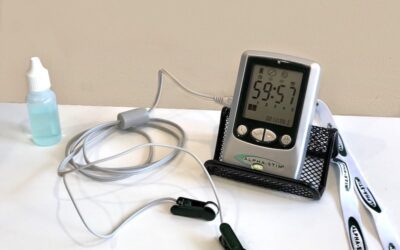


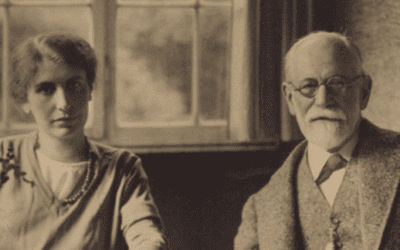

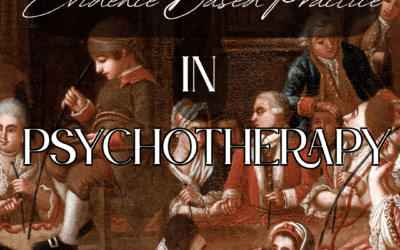


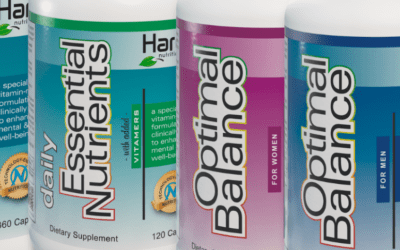
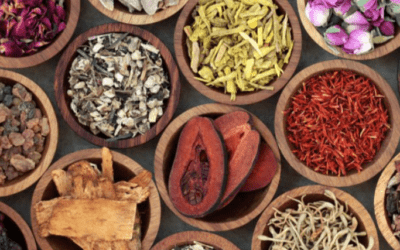

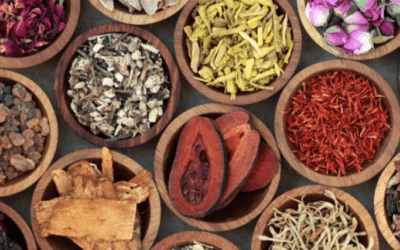
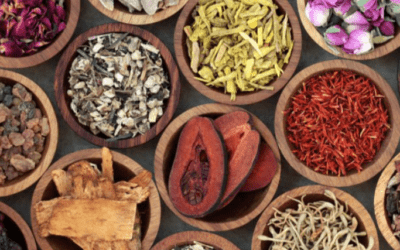
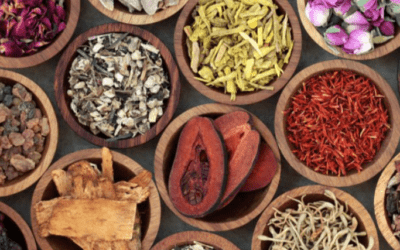




0 Comments